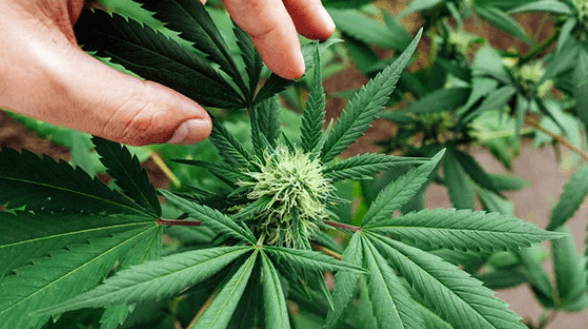Social media platforms like Instagram have become an integral part of teenage life. Instagram offers users a platform to share moments of their lives, connect with others, and explore diverse content.
According to a Pew Research Center report, 59 percent of teens in the US use Instagram. Despite its popularity, Instagram is increasingly being linked to various mental health issues among teenagers. From fostering unrealistic beauty standards to promoting feelings of inadequacy, Instagram can cause several mental health issues.
Here are a few ways Instagram is causing mental health problems among teens and young people.
Unattainable Beauty Standards
According to research published on MDPI, one of the most pervasive issues on Instagram is the promotion of unrealistic beauty standards. Teenagers are bombarded with images of flawless faces, perfectly sculpted bodies, and luxurious lifestyles, often enhanced or edited to perfection. These images create an unattainable ideal that many teens feel pressured to conform to, leading to feelings of insecurity, low self-esteem, and body dissatisfaction.
Constant exposure to such images can fuel a cycle of self-criticism and negative body image. This ultimately contributes to the development of eating disorders and other mental health issues.
Social Comparison and FOMO
Instagram’s Highlights and Reels features encourage users to showcase only the best moments of their lives, creating a distorted perception of reality. As teenagers scroll through feeds filled with seemingly perfect parties and relationships, they can’t help but compare their own lives to these idealized portrayals.
This constant comparison breeds feelings of inadequacy and FOMO – fear of missing out. That’s because most teens believe that they are not measuring up to their peers’ seemingly perfect lives.
The relentless pursuit of likes, followers, and validation further exacerbates these feelings, trapping teens in a cycle of comparison and self-doubt.
Cyberbullying and Online Harassment
According to The Guardian, despite Instagram’s efforts to combat cyberbullying, the platform remains a breeding ground for online harassment and cruelty. Teenagers are especially vulnerable to cyberbullying as they navigate the complexities of social relationships and identity formation.
From hurtful comments and derogatory memes to exclusionary behavior and public shaming, cyberbullying on Instagram can have devastating effects on teens’ mental health. In fact, many have filed an Instagram lawsuit because of the platform’s failure to prevent cyberbullying, which eventually impacts teens’ mental health. The threat of judgment and ridicule can lead to anxiety, depression, etc., as teens struggle to cope with the emotional toll of online harassment.
According to TruLaw, claimants of the Instagram lawsuits contend that the experiences of being bullied online have impacted their kids’ overall psychological well-being. Such levels of cyberbullying are giving rise to a mental health crisis that parents, schools, and the greater society are not ready to face. Social media companies and tech giants alike must come together to put an end to this crisis.
Addiction and Time-Wasting
The addictive nature of Instagram is well-documented, with its endless scroll feature and dopamine-inducing likes triggering a compulsive need for validation and social approval. Many teenagers find themselves spending hours mindlessly scrolling through their feeds, often at the expense of real-life interactions, hobbies, and responsibilities.
This excessive use of Instagram not only wastes valuable time but also exacerbates feelings of loneliness, isolation, and disconnection from the real world. Furthermore, excessive social media use is associated with poor sleep quality, impaired cognitive function, and an increased risk of anxiety among adolescents.
Frequently Asked Questions (FAQs)
How does social media affect students’ mental health?
Social media can intensify stress and anxiety among students due to academic pressures and social comparisons. It often disrupts sleep patterns and reduces productivity, impacting academic performance. Additionally, cyberbullying and online harassment pose significant mental health risks for students, leading to depression and low self-esteem.
How does Instagram promote dangerous lifestyle choices?
Instagram often glamorizes extreme diets, unrealistic body standards, and risky behaviors like substance abuse and self-harm through influencers and curated content. Filters and editing tools can distort perceptions of beauty, leading to body dissatisfaction and eating disorders. Moreover, the pursuit of validation through likes and followers can drive individuals towards unhealthy habits for social approval.
Read also Look Hcaptcha Discord Ml Aigeneratedgaultvice
How does Instagram fall short in safeguarding the mental well-being of teenagers?
Instagram often prioritizes engagement and user retention over mental health safeguards, allowing harmful content like cyberbullying and unrealistic body images to proliferate. Its algorithms may inadvertently amplify negative content, contributing to the deterioration of teenagers’ mental well-being.
In conclusion, while Instagram offers numerous benefits and opportunities for self-expression and connection, its detrimental effects on teenage mental health cannot be ignored. From fostering unrealistic beauty standards to promoting validation-seeking behaviors, Instagram contributes to a toxic digital culture that undermines teens’ well-being and self-esteem.
It is crucial to raise awareness about the harmful effects of social media and empower teenagers to cultivate healthy digital habits. Only by addressing these underlying issues can we create a safer and more supportive online environment for future generations to thrive.







